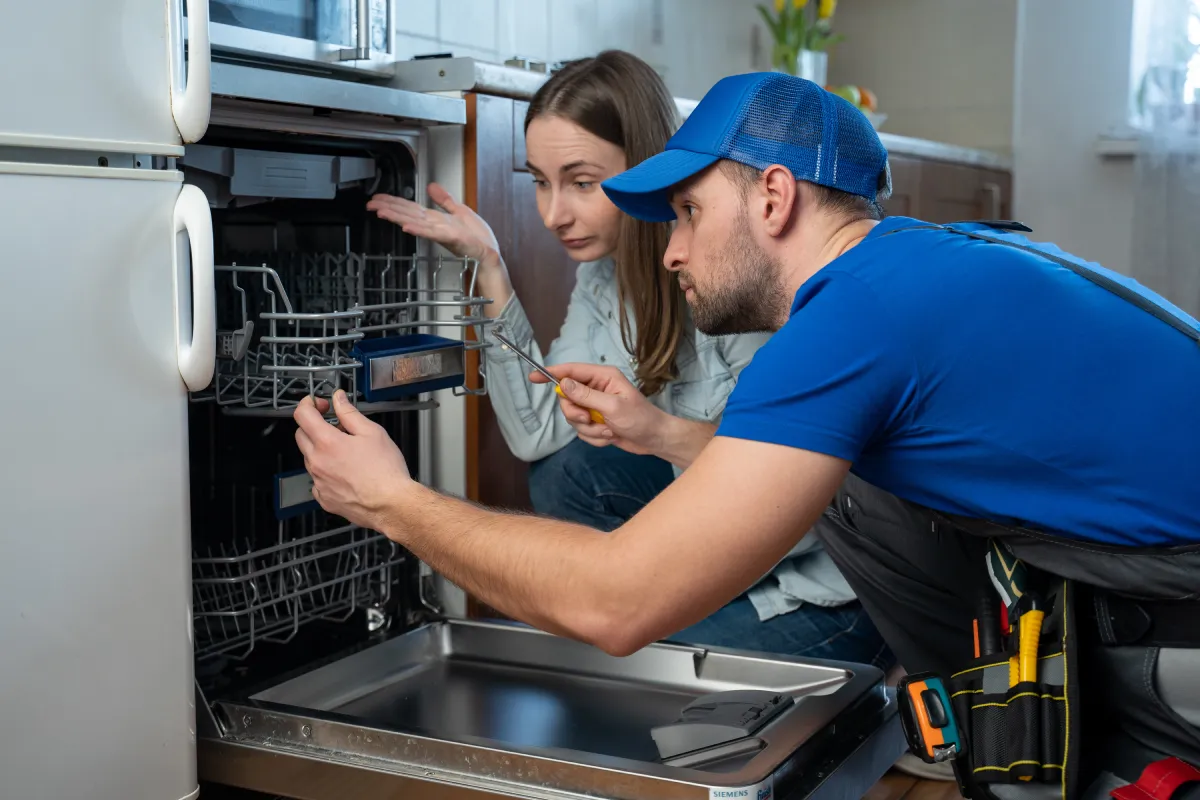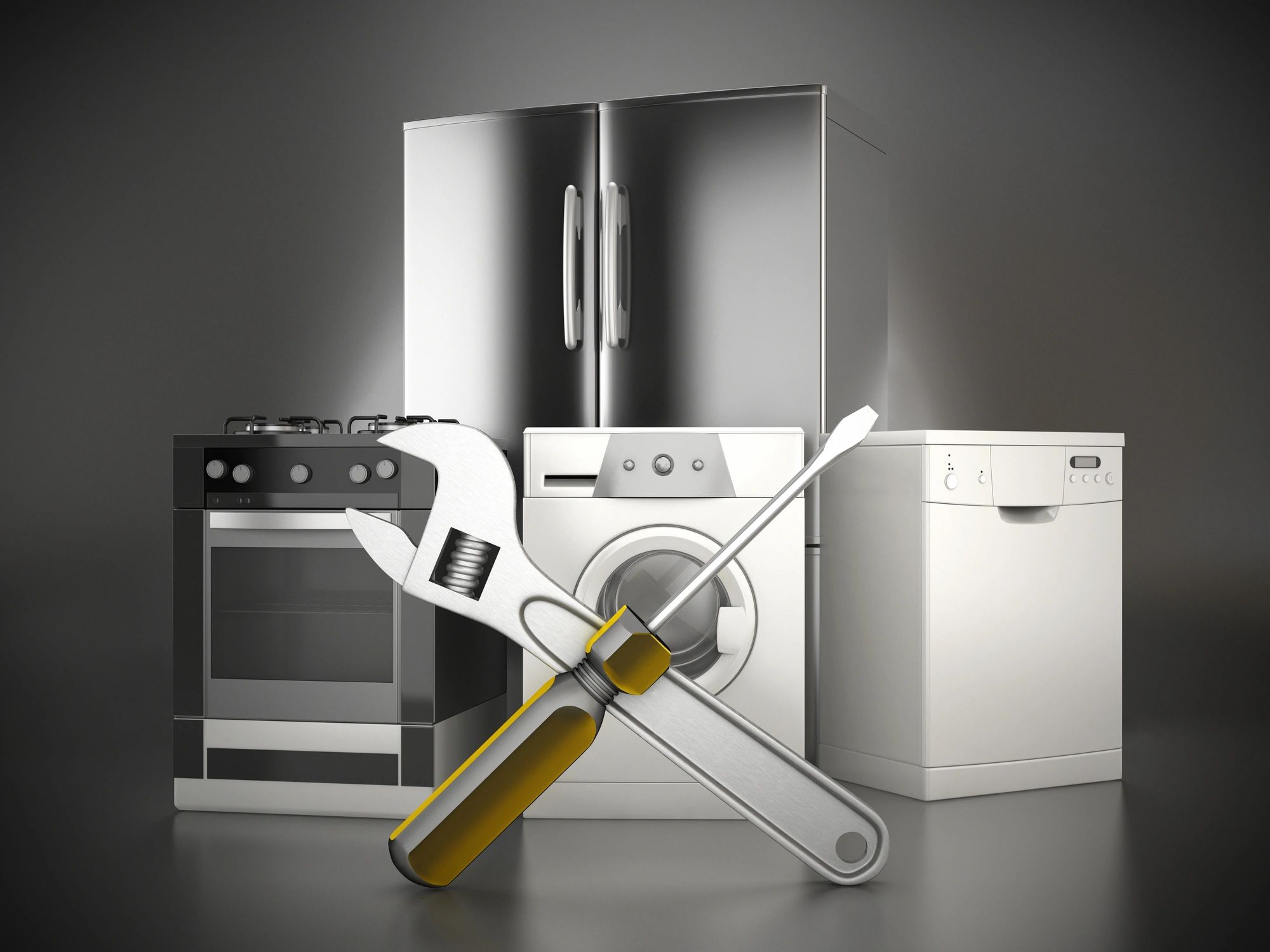The Ultimate Guide to Comprehending Home Appliance Repair Work in your home
When your refrigerator stops cooling down or your stove declines to warmth, it can really feel frustrating. Recognizing device repair in your home can save you time and money. You'll learn to recognize symptoms, make use of crucial tools, and follow a methodical troubleshooting procedure. But before you start, there are important safety and security precautions you need to take into account. What are the most common problems, and how can you fix them? Allow's discover the basics.
Usual Home Appliance Issues and Their Symptoms
When your appliances begin breaking down, it's vital to identify the signs at an early stage. Overlooking them can lead to larger issues and expensive fixings. For example, if your refrigerator isn't cooling properly, you could observe warm spots or condensation forming. This can show a falling short compressor or an obstructed vent.Your dish washer may show issues through dirty meals or unusual sounds throughout cycles. If you listen to grinding or clanking, it's time to investigate.A washing machine that will not spin or drain pipes can leave you with soggy washing, suggesting a clogged drainpipe or a malfunctioning pump.Lastly, if your oven's temperature level appears off or it takes for life to pre-heat, you may be managing a damaged thermostat. By remaining sharp to these symptoms, you can deal with issues before they escalate right into major repairs.
Necessary Devices for Device Repair
When you're taking on device repairs in the house, having the right devices is essential. Standard hand devices like screwdrivers and pliers will certainly assist you take apart and repair various appliances, while electric testing devices ensure you're functioning safely with circuitry. Allow's discuss what you need to begin on your repair work journey.
Basic Hand Devices
Having the right devices is important for effective home appliance repair work at home. Beginning with a trustworthy screwdriver collection, including both flathead and Phillips types, as screws are usual in appliance assembly. Pliers are additionally essential; they assist with gripping, turning, and cutting cords or little components. A pair of needle-nose pliers can reach limited areas easily. You'll need a good flexible wrench for tightening up or loosening nuts and bolts. An utility blade is convenient for cutting through packaging or insulation. Do not neglect a strong workbench or surface to securely organize your devices and parts. With these fundamental hand devices, you'll be well-prepared to take on most home appliance fixings that come your means.
Electric Screening Gadgets
Along with basic hand devices, electric testing devices play an essential function in device fixing. These devices aid you diagnose electric concerns and guarantee home appliances operate securely. A multimeter is essential; it measures voltage, present, and resistance, permitting you to identify issues promptly. A non-contact voltage tester is another must-have, allowing you identify live cords without making direct get in touch with, enhancing your security. Clamp meters are excellent for determining present flow in cables without detaching them, saving you time and effort. Additionally, circuit testers can swiftly inspect if electrical outlets are working correctly. By using these tools, you'll streamline your troubleshooting process and boost your repair work abilities, making home appliance upkeep a whole lot simpler.
Step-by-Step Overview to Diagnosing Home Appliance Issues
When your device breaks down, it can be frustrating, but detecting the issue doesn't have to be overwhelming. You'll discover to identify common troubles and use efficient troubleshooting techniques. Let's go through the steps to get your appliance back in working order.
Typical Home Appliance Troubles

Fixing Strategies Described

Fixing Major Kitchen Appliances: A Closer Look
Have you ever asked yourself how to tackle common issues with your cooking area appliances? Repairing significant kitchen home appliances like refrigerators, ovens, and dish washers can be much easier than you assume. Begin by identifying the issue-- whether it's a refrigerator not cooling down or an oven that will not warm. Often, a straightforward reset or examining the source of power can solve the issue.For refrigerators, tidy the condenser coils and check the door seals. If your oven's not heating, examine the heating aspect and thermostat. Dish washers might just need a tidy filter or a reset to get them back at work. Constantly unplug the home appliance before diving right into fixings to ensure your safety.Don' t fail to remember to consult the user guidebook for certain fixing suggestions associated with your design. With a bit of perseverance and the right devices, you can with confidence deal with appliance fixings and save money at the same time!

Fixing Washing Appliances: Tips and Techniques
When your laundry home appliances begin breaking down, it can really feel overwhelming, but repairing them does not need to be a problem. Beginning by examining the power supply. Confirm the appliance is plugged in and the outlet is working. Next, check the door or cover switch; a damaged switch can protect against the maker from operating.For washers, if it's not rotating, look for unbalanced loads. Redistributing the clothes may resolve the concern. If your dryer isn't home heating, tidy the dust filter and inspect the vent for blockages.Listen for unusual sounds; they can show a problem. If your appliance is dripping, examine the tubes for splits or loose connections. Paper any type of mistake codes presented on electronic displays, as they can guide you in determining the concern. Lastly, seek advice from the user manual for certain repairing tips associated with your design.
Security Precautions to Take Throughout Fixes
Before you begin any kind of home appliance fixings, it's vital to prioritize safety to stop crashes or injuries. Disconnect the home appliance or turn off the circuit breaker to assure no power reaches it while you function. Use shielded devices to minimize the risk of electric shock. Use safety goggles and gloves to secure on your own from sharp edges or debris (Maytag Washing machine repair Dependable Refrigeration & Appliance Repair Service).Make certain your workspace is tidy and well-lit, so you can see what you're doing. Keep kids and animals far from the location to avoid diversions and potential risks. If you're managing gas appliances, be extra careful; look for leakages before proceeding.Take your time, and do not rush with repair work. If you really feel unpredictable regarding any kind of step, it's much better to stop and research than to guess. Adhering to these safety measures will certainly aid create a more secure atmosphere for your DIY device repair work job
When to Call an Expert for Assistance
Just how do you understand if it's time to call a specialist for device fixings? If you've tried standard troubleshooting without success, it's a clear indication. If your appliance still will not start or shows uncommon sounds after resetting it, don't hesitate to seek professional help.When you see leakages, smoke, or melting scents, prioritize security and call a professional immediately. These concerns can result in more considerable damage or pose risks to your home.Also, if your appliance is under warranty, getting in touch with a professional is typically the very best route. They can assure that repair work will not nullify your service warranty, conserving you cash in the long run.Finally, if you're uncertain or awkward with complicated fixings, it's important to leave it to the experts. Keep in mind, tackling challenging problems without the ideal experience can cause costly blunders. Count on a professional when in doubt!
Regularly Asked Inquiries
Just How Can I Prevent Home Appliance Troubles in the Future?
To stop appliance issues in the future, you need to perform routine upkeep, look for deterioration, tidy filters, and stay clear of overloading. Staying aggressive will help expand their life-span and keep them running efficiently.
What Are the Many Typical Do It Yourself Appliance Repair Mistakes?
You may overlook safety precautions, skip fixing steps, or use inaccurate devices when attempting DIY appliance repair services. Rushing the process or disregarding maker standards can cause even more considerable concerns and pricey blunders. Keep patient and notified!
Exactly how Do I Know if a Part Demands Replacement?
You can inform if a component requires replacement by looking for unusual sounds, leaks, or inconsistent performance. If the home appliance battles to operate correctly or reveals visible damage, it's likely time for a replacement.
Can I Use Generic Parts for Home Appliance Services?
Yes, you can make use of generic parts for appliance repair work, but identify they work - Washer dryer repair service Dependable Refrigeration. Common components could save you cash, yet they might impact performance or longevity, so consider your choices meticulously before deciding
What Service Warranties Cover Home Appliance Services?
Most device guarantees cover repair services for making issues, however they typically leave out damage from abuse. Check your check here guarantee terms meticulously, as some may require utilizing certified technicians and original components for insurance coverage to remain valid.